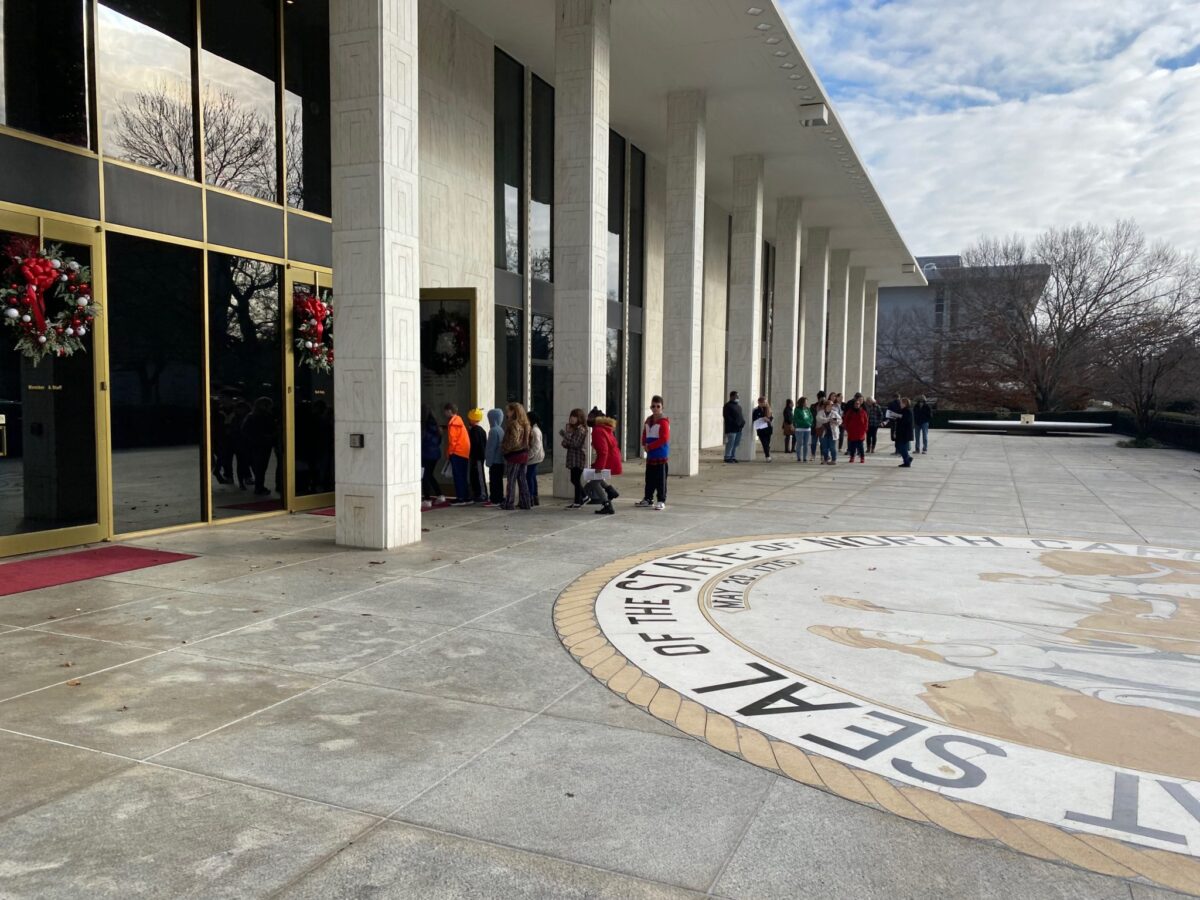
Share this story
While the 2023 long session of the General Assembly officially kicked off earlier this month, Wednesday is the day that lawmakers really get to work.
With legislators poised to develop a budget for the next two years, education is bound to be an important part of their calculus as they go about their work.
So, what’s going to happen with education this session?
It’s always good to take a look back first, so below you can see what happened in 2021 and 2022:
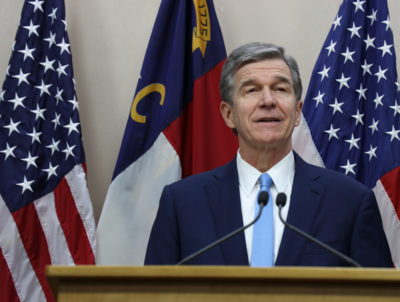
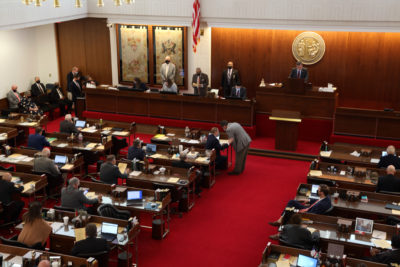
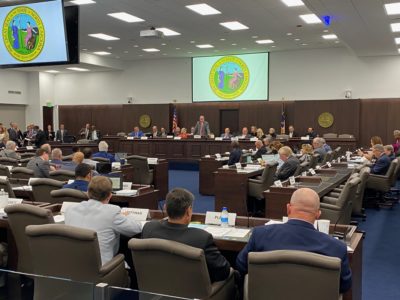
How much money do we have?
The first thing we need to consider when looking ahead is how much money we have. So, what do we know so far?
Back in 2017, the General Assembly passed a two-year budget that included more than $9 billion for the Department of Public Instruction (DPI) in 2017 and in 2018.
In the short session in 2018, lawmakers added an additional $167 million for the Department of Public Instruction.
In 2019, the General Assembly wanted to pass a two-year budget that included $9.8 billion for the Department of Public Instruction in 2019, and $10.2 billion in 2020.
That budget, however, was vetoed by the governor, so it never went through.
And then the pandemic hit. Without a biennium spending plan to work with, 2020 didn’t really bring any resolution to the budget stalemate.
But in 2021, the Republican-led General Assembly and Democratic Gov. Roy Cooper worked more closely together and came up with a budget that was ultimately signed by Cooper.
Lawmakers passed a budget that spent $10.6 billion on the Department of Public Instruction for 2021 and $10.7 billion for 2022.
In 2022, they passed, and Cooper signed, a budget revision that spent an additional $528 million for a total of $11.3 billion for DPI in 2022.
Ok, enough looking into the past. How much money do legislators have to work with this year?
According to the December General Fund Monthly Budget Report — the most recent available — North Carolina has a little over $4 billion that isn’t reserved for any other expenses right now. But some of that hasn’t been allocated to reserves that the General Assembly designated yet, so it might not all be available.
While we have these numbers from December, what we don’t have is a consensus revenue forecast. That is generally what is developed and used by the governor and lawmakers to develop spending plans.
It came out in February last year, and it is expected the same will be true this year. Until that comes out, a true picture of the state’s economic situation won’t be clear.
With interest rates on the rise and inflation rampant, one thing that needs to be taken into consideration is the possibility of a recession.
Back at a State Board of Education meeting in October, Jamey Falkenbury, director of government affairs for state Superintendent Catherine Truitt, told Board members that there has been a lot of talk about the country heading into recession and that legislative requests might need to be tempered by the possibility.
One other thing to consider is Medicaid expansion. Republican opposition to the proposal has waned over the last few years, and it’s possible this is the session that it happens. If that does happen, it means extra money, and that will lessen pressure on various aspects of the budget, including education. That could mean lawmakers would have more wiggle room when considering education proposals.
Meanwhile, there are plenty of parties looking for education money from the General Assembly. Let’s dive into that.
Who’s asking?
The State Board of Education and DPI are the ones most chiefly responsible for public education at a statewide level. As such, it’s important to pay attention to what they’re asking lawmakers for.
At this month’s Board meeting, members passed their legislative priorities for the coming session. They are asking for a total of $203 million recurring in 2024 and $94 million non-recurring. In 2025, they want $206 million recurring and $46 million non-recurring.
That money is for a number of items, including funds for early learning, school nurses and social workers, and to eliminate the co-pays for reduced-price meals for students.
There are a couple of wild cards.
The Board wants to ask for funding to change the exceptional children funding formula, but DPI hasn’t yet calculated how much money that will take.
And the Board is still awaiting the calculations for a licensure and teacher pay reform pilot it is hoping to launch in the fall. We will have more on that further down.
You can see the full presentation on their budget priorities below.
In addition to the Board and DPI, there are a variety of organizations also trying to advocate for education.
The North Carolina Principals and Assistant Principals Association represents the state’s school leaders and released the following legislative agenda for 2022-23.
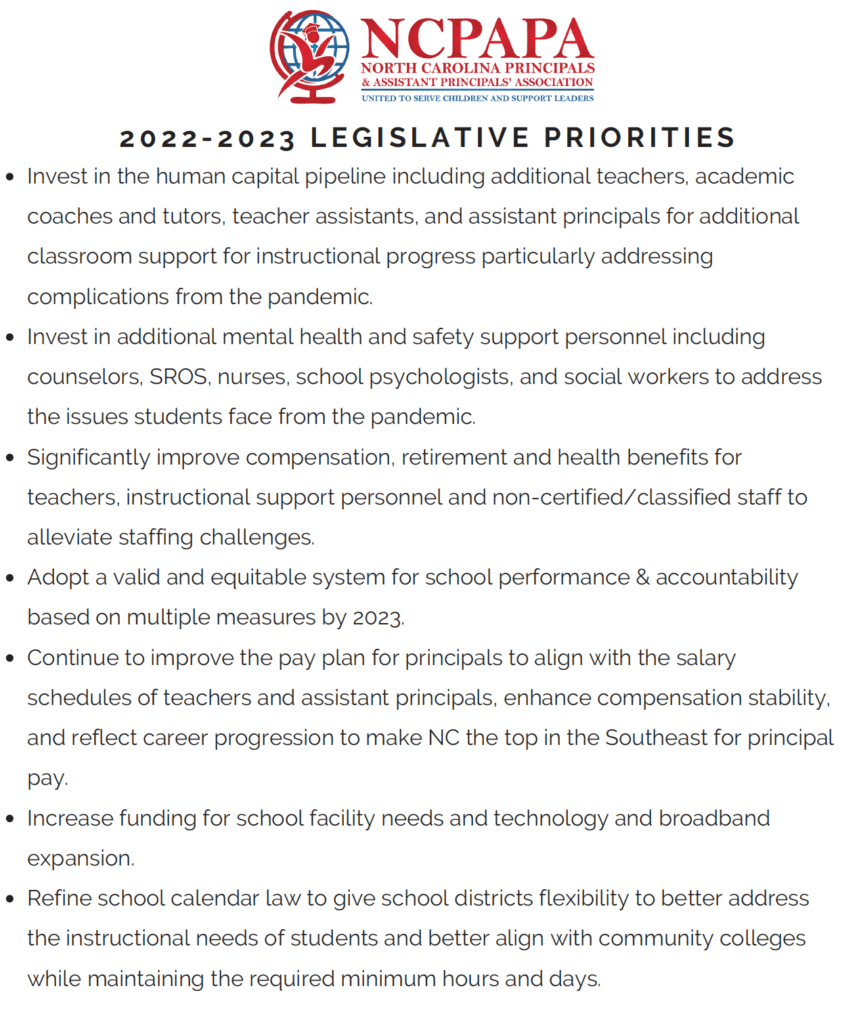
Currently, principals are paid on a salary schedule that includes a base level of pay based on the size of their school. Principals can get increased pay if their schools meet or exceed growth.
NCPAPA’s asks include improving the principal pay plan by reducing the amount of a principal’s salary dependent on test scores and aligning it with that of teachers. If the plan were aligned with teachers, that would mean that salary raises for teachers would necessitate commensurate salary increases for principals. It would also ensure that administrators never make less than the teachers they oversee.
Another wrinkle is how the state determines whether principals’ schools met or exceeded growth.
Originally, under the principal salary schedule, the principals were rated on whether their schools met or exceeded growth in two out of the last three years. But during the most recent short session, that got changed to just the last year. Coming on the heels of the pandemic, that concerned some principals considering the poor showing from schools dealing with COVID-19.
The State Board of Education is pushing for a move back toward the prior method of rating principals.
Other asks from NCPAPA include more mental health and safety support personnel, better pay for teachers, reform of school accountability, and school calendar flexibility.
NCPAPA’s umbrella organization, the North Carolina Association of School Administrators, includes similar asks in its legislative priorities, all of which you can see below.
The North Carolina School Boards Association represents all of the state’s school boards and has also released a 2023-24 legislative agenda.
It is also asking for better pay for teachers, mental health support personnel, a reform of school accountability, and school calendar flexibility. Like the State Board of Education, the School Boards Association is also asking for a change to how exceptional children are funded in the K-12 school system.
You can see what else the School Boards Association is asking for in full here.
The Public School Forum of North Carolina has an annual event call Eggs & Issues, where they announce their top education issues for the year. It’s at the end of the month, so the full scope of their priorities hasn’t become public, but this year, they will be focusing on five broad topics, with recommended policy actions for each to come during the actual event.
The broad topics are:
- Ensure fair and competitive compensation for educators.
- Grow, retain, and diversify the teacher pipeline.
- Address the root causes of mental health and school safety crises.
- Prepare students for the world they live in.
- Implement, monitor, and evaluate the Comprehensive Remedial Plan.
Eggs & Issues will be held Jan. 31. If you’re interested in attending, you can register here.
myFutureNC is a nonprofit that is spearheading efforts to reach North Carolina’s education attainment goal: 2 million North Carolinians with a high-quality credential or postsecondary degree by 2030.
Among their asks are career plans for all middle and high school students, scholarships for short-term training for higher wage careers, additional state funding for NC Pre-K, and reform of the state’s school accountability model. You can see all of their legislative priorities below.
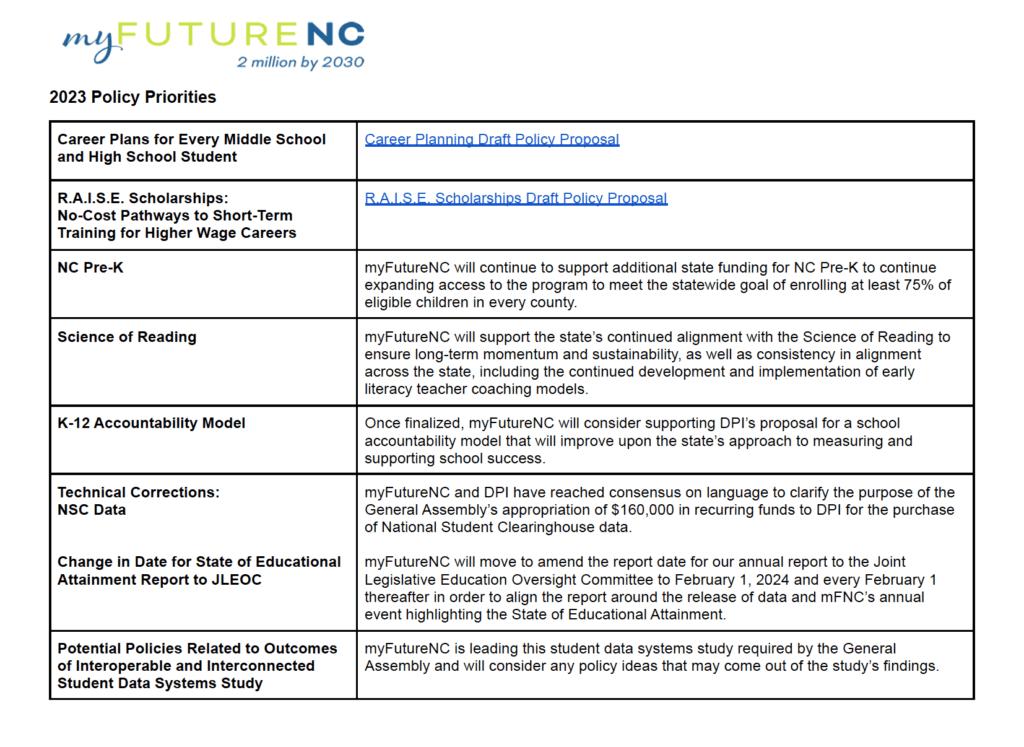
Organizations focused on school choice also have a wish list for legislators this session.
The North Carolina Coalition for Charter Schools includes buckets for fair funding, autonomy, accountability, and admission lotteries. See their priorities below.
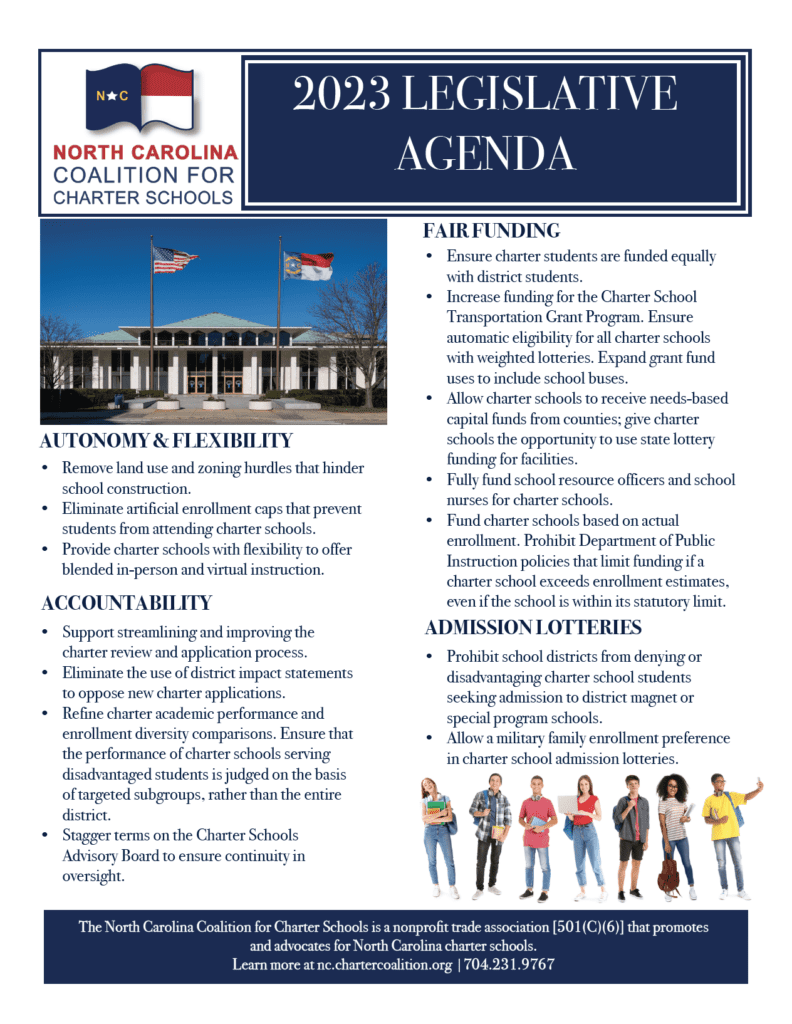
Parents for Educational Freedom North Carolina, a group that champions the Opportunity Scholarship program, also has some asks of lawmakers.
Brian Jodice, the organization’s executive vice president, said in an email that he wants to see legislators continue to support school choice, and one of those ways is through continuing to increase funding for opportunity scholarships and similar programs.
These scholarships provide public money to families to use for tuition at private schools of their choice. In the short session budget, lawmakers put an additional $56 million into the opportunity scholarship grant reserve and expanded income eligibility to 200% of the amount students need to qualify for free or reduced-price lunch. Lawmakers almost always include funding increases for these and other similar programs in their budgets.
Another thing to consider is the House Select Committee on An Education for North Carolina’s Future, which met 12 times since January. The group put out a report in December that lists the changes it thinks should be made in education. They are:
- Implementing a high-quality standard education.
- Increasing educator pay.
- Increasing instructional support personnel and access to alternative learning placements.
- Designing an assessment system that generates useful data.
- Adjusting the school calendar law to leave these decisions to local school boards.
- And amending the state constitution to grant greater authority to the state superintendent.
You can see the full report here.
Those are some of the big players asking for things, but what is actually going to happen this long session?
Teacher pay
The biggest education budget item every session is teacher pay. While the General Assembly has consistently given pay raises, critics argue that it is not enough and that raises should be across the board.
Across the board means that every single teacher receives the same raise. Instead, what usually happens is that raises are an average. So, for example, when we talk about an average 5% pay raise, that means that some teachers get more and some teachers get less. And often, the bulk of the raises are weighted towards a particular strata of the teacher pool.
During the last long session in 2021, lawmakers passed an average 5% pay increase for teachers in 2021 – 2.5% in both years of the biennium. During the short session in 2022, legislators bumped pay for teachers in 2022 to a 4.2% average raise.
An important thing to realize about teacher pay is just how much of the K-12 education budget goes to pay teacher salaries and benefits. For context, teacher pay and benefits currently encompasses about $7.2 billion of the little more than $11 billion going to K-12 education from the state.
Local supplements
One of the most novel aspects of the long session budget was a plan to distribute $100 million among school districts to provide local supplements for teacher salaries. The money was distributed to localities with an emphasis on those districts with fewer resources to provide their own local supplements and attract talent.
In 2022, the short session budget bumped up the funding on that program to $170 million. There is a good chance that the biennium budget will bring more increases to this line item.
Teacher licensure reform
The State Board of Education, DPI, and the Professional Educator Preparation and Standards Commission (PEPSC) have been considering how to change how teachers are licensed and paid.
PEPSC passed onto the Board a draft proposal following more than a year of work. It introduces various license levels and corresponding salaries. Critics say it looks like a merit pay proposal.
The State Board of Education realized it would need changes in law to move forward with the proposal and also decided a pilot was the best way to proceed.
The Board is currently working on figuring out just what exactly it needs to ask the General Assembly to do in order for the pilot to happen. And DPI is trying to determine how much money would be needed for the higher salaries teachers in the pilot would receive.
School nutrition
One of the State Board of Education’s asks is money to eliminate the co-pay students pay for reduced-price meals in school. Essentially, they want them to eat for free.
The Board is asking for $5 million in both years of the biennium for this plan, and it’s likely there there will be at least some discussion among lawmakers.
This also comes at the tail end of the COVID-19 pandemic, when all students in North Carolina and the rest of the country could eat for free. That means that for those two years, students who qualify for reduced-price but not free meals were getting their meals at no cost.
This school year was the first since COVID-19 struck where that was no longer the case. This could potentially put added pressure on lawmakers to make that reduced-price meal co-pay go away.
Accountability
DPI is hard at work coming up with a multiple-measure accountability model for state schools. The goal is to replace the current model, which is determined using just academic achievement (80%) and academic growth (20%). Both of those metrics are determined using test scores, and the accountability group at DPI is looking to get away from the emphasis on standardized testing as the main measure of school success.
For years, advocates have been trying to get the school performance grade calculus changed, arguing that academic growth — how much students learn in a year — is a more valid signpost of success than academic achievement, which only shows how well students do on a test taken one day out of the year. Those efforts have, thus far, been totally unsuccessful, though that hasn’t stopped lawmakers from proposing legislation to do something about it.
The question is: Now that DPI is actively working on something extensive that could replace the current model, will that lead to change?
The current plan for the group working on accountability reform is to meet in January and hear recommendations that could potentially lead to a pilot of new accountability measures in the fall. In order for that to happen, lawmakers will have to act. They would need to grant authority for the state to run the pilots and to exempt those taking part in the pilots from current accountability requirements.
Calendar flexibility
The state mandates two things when it comes to school calendars: how many days students must be in school, and when districts can start and end their calendars.
The state says that students must be in school for a minimum of 185 days a year, or 1,025 hours of instruction. It also says that schools can’t start earlier than the Monday closest to Aug. 26, and they can’t end later than the Friday closest to June 11.
As it turns out, this creates a host of problems for our geographically diverse state. From snow to hurricanes, schools are often forced to close school and then jam in make-up days at odd times in order to fit within the legislative calendar mandate.
Districts argue they need calendar flexibility — the ability to start and stop school given local considerations — to avoid extreme measures sometimes needed to get kids the instruction that is mandated.
In addition, districts want flexibility so that they can better align their calendars with those of community colleges, which some high school students attend.
There is large-scale bipartisan support for calendar flexibility, but advocates say that the tourism industry holds up legislation because businesses that rely on student workers over the summer don’t want districts to cut into their season.
This is a perennial topic at the General Assembly, and another one that has failed to gain traction. You will notice in the legislative priorities in the previous section that multiple organizations are asking for it. In addition, a committee seeking to reimagine North Carolina education put out a report in December suggesting flexibility should be granted to districts. The problem is that it is a House committee. And while the House has been more supportive of calendar flexibility proposals, the Senate has killed any attempts to make it happen.
Meanwhile, every year, individual districts have been defying state law and changing their calendars without permission. Lawmakers have, no doubt, noticed.
Union County Schools is one of those districts that has decided to go its own way, but not without consequences. The district is being sued by two parents and an academy that offers horse riding lessons and camps because of their calendar change.
All this action begs the question: Is this year the year school calendar flexibility actually makes some forward movement?
School facilities
Money for school construction is another topic that has been argued about a lot in the halls of the General Assembly these last few years. The state, largely, doesn’t provide districts funds for construction or repair of buildings. That is traditionally the province of the often cash-strapped districts themselves. But a 2020-21 survey found that school construction needs around the state have grown to $12.8 billion.
Back in 2019, there was a push to find money to help fund the school construction needs in North Carolina. The big division was between the House and the Senate, with the House favoring a school construction bond and the Senate looking for a pay-as-you go approach.
The final budget compromise would have provided about $4.4 billion over 10 years for K-12 school construction and repair via the pay-as-you go approach, but Cooper vetoed it, in part because he favored the bond proposal.
And then in 2020, COVID-19 and economic uncertainty made the prospect of finding the money for school construction even more unlikely.
In the 2021 budget, lawmakers took a different tact. They made changes to the Needs-Based Public School Capital Fund (NBPSCF) to lend a helping hand to districts.
This fund was added to the education lottery in 2017-18 and was specifically for the construction of new facilities in low-wealth counties and required matching funds from those counties.
The 2021 budget changed the eligibility requirements so that almost all 100 counties are now eligible for grants from the fund. It also made a change allowing counties to use the funds for “enlargement, improvement, expansion, repair, or renovation of classroom facilities at public school buildings within local school administrative units located in the county.”
Lawmakers also allocated an additional roughly $32 million recurring in the first year and $63 million recurring in the second year to the fund.
During the short session, the budget added another $55 million from the lottery. Currently, there is $431 million in that fund for school construction and repair projects. Look for the potential of further increases.
Mental health
Student mental health has taken on a new importance after the COVID-19 pandemic and will likely be an issue talked about this session. Among the State Board of Education’s asks is $100 million for school nurses and social workers.
Other organizations, including NCPAPA, NCASA, and the Public School Forum of North Carolina are pushing for more mental health support, in particular mentioning mental health and school safety support personnel.
Along with mental health also comes the issue of access to firearms.
In an effort to decrease minors’ access to guns, the Child Fatality Task Force is supporting legislation that aims to educate adults on the importance of safely storing their guns.
The Child Fatality Task Force (CFTF) is asking for $250,000 over the biennium for state-level positions, housed at the Department of Health and Human Services’ Injury and Violence Prevention Branch. These individuals would help local communities launch initiatives specific to their needs and opportunities.
The task force unanimously approved the recommendation, which it has supported since 2018, at its October meeting.
The availability of firearms by youth has tragic consequences, highlighted at the meeting by Kella Hatcher, CFTF executive director, and William Lassiter, deputy secretary of the Division of Juvenile Justice and Delinquency Prevention. In 2020 and 2021, more than half of children who died by suicide used a firearm. Firearm possession crime among juveniles has jumped from 4% of all reports in 2017 to 13% in 2021.
A safe storage initiative could make a difference in youth firearm deaths, according to a 2019 JAMA Pediatrics study.
Measuring enrollment
Earlier this month, the State Board of Education sent lawmakers a report laying out how the state could fund education using a new measure of enrollment. Lawmakers recently asked DPI to study how it could use full-time equivalency (FTE) instead of average daily membership (ADM) for school funding. The K-12 system is funded based on ADM, and the community college and UNC systems are funded based on FTE.
The fear from some is that if the K-12 system moved to FTE, community colleges and schools would stop being paid separately for the same student, thus effectively cutting funding for either schools, the community colleges, or both.
Leandro
Leandro is a wild card this session.
Leandro is the decades-long court case that, at its heart, is about whether every student in the state is getting access to a sound, basic education.
Back in 2021, a judge in the Leandro case ordered the state to turn over $1.7 billion in funds to cover the cost of two years of a comprehensive plan aimed at making sure the state was giving all students the education they need. That decision went all the way up to the Supreme Court, which affirmed his order.
The Supreme Court sent the order back down to the trial court so that a judge could determine how recent budgets passed by the General Assembly impact the amount of money actually still needed for those two years of the plan. That’s where the case sits now.
In the meantime, the chief justice of the state Supreme Court took the case out of the hands of the judge who ordered the transfer and into the hands of a business court judge. Just recently, that judge asked to be taken off, so yet another judge is now in charge.
The elections last November also changed the composition of the Supreme Court from majority Democrat to majority Republican. So it’s more likely that attorneys for Senate President Pro-Tempore Phil Berger, R-Rockingham, and House Speaker Tim Moore, R-Cleveland — both of whom are parties in the case — will look for an opportunity to get the case back up to the state’s top court.
Berger perhaps foreshadowed his plans on Leandro when the long session officially kicked off earlier this month.
“We must disabuse ourselves of the notion that more money alone buys positive outcomes for our students,” he said. “Success in education policy is about more than hitting some arbitrary funding goal.”
What you need to know about the veto
The General Assembly had a veto-proof majority for the first two years of Gov. Roy Cooper’s term. That meant that they could pass basically anything they wanted without fear that he could sustain a veto.
That changed for 2019, and Cooper was able to veto that year’s biennium budget. That fact ultimately meant that the leaders in the House and Senate had to work more with Cooper’s office if they wanted to pass a budget, and it led to a two-year spending plan in 2021 that Cooper actually signed.
After this previous November’s midterms, the ground is rocky again. The Senate is veto-proof, and the House is just short one vote. That means it’s possible the House could override a veto of any controversial legislation or even the budget by a variety of means.
Here is one way that could happen: The House could try to hold a vote at times when not all Democrats are in the room. They succeeded in doing something similar in 2019, but the veto override was never heard in the Senate. The Senate, at the time, also did not have a veto-proof majority.
Already this year, on the largely ceremonial first day of session, the House voted to scrap a rule that requires the House speaker to post a notice of an intended vote to override a veto. That means that this session, the speaker could call for a veto override vote at any time — for instance, when there aren’t enough Democrats in the room to block it.
In addition, committee assignments came out this week, and three Democrats got leadership positions in the House. Rep. Michael Wray, D-Northampton, was made the senior co-chair for the House Finance Committee; Rep. Tricia Cotham, D-Mecklenburg, was named a co-chair for the House Education K-12 Committee; and Rep. Shelly Willingham, D-Edgecombe, was named a co-chair of the House Committee on Alcoholic Beverage Regulations.
That could signal a hope that these Democrats might side with Republicans in the event of a veto override vote.
All of this could be particularly impactful when it comes to a pair of bills that could show up again in the General Assembly this session: the “Parents’ Bill of Rights,” and what some call an anti-critical race theory bill.
What did we miss? What are you looking out for this legislative session, and what questions do you have? Tweet us at @EducationNC.
Legislature 2023
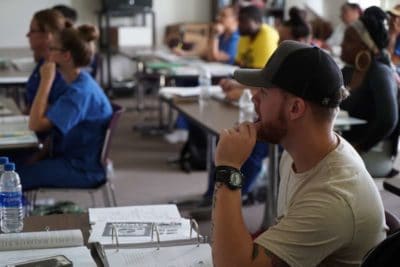
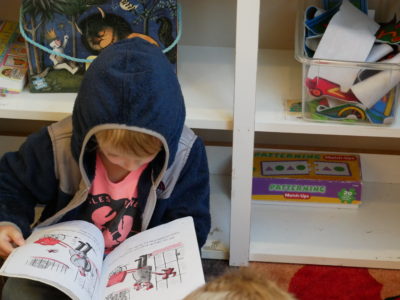
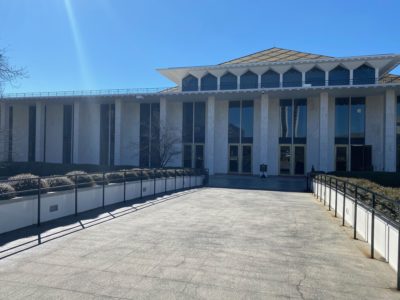
Recommended reading



